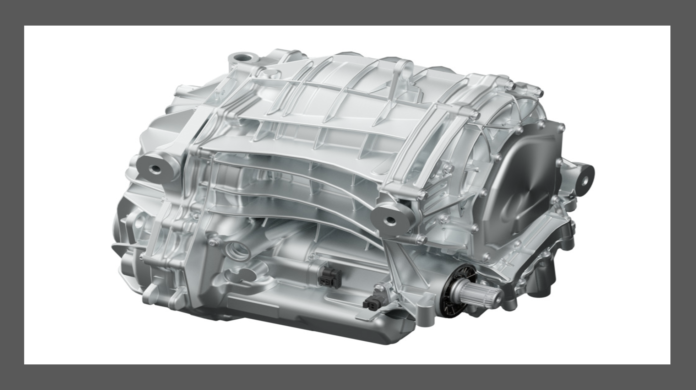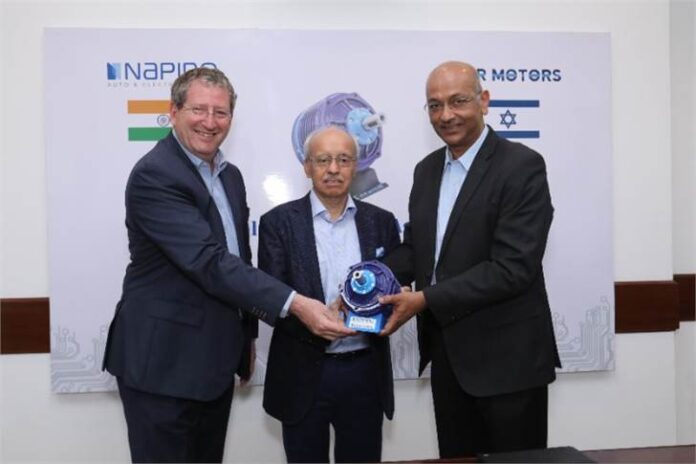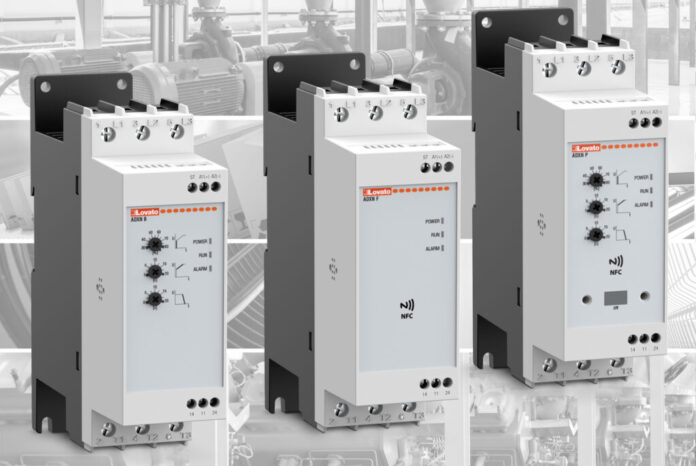Axalta’s bespoke automotive products provide electrical insulation solutions and are designed to improve the performance levels of modern electric motors. They include Voltron wire enamel, Voltatex 4200 for impregnation, and adhesive electrical steel coatings such as Voltatex 1175W and Voltatex 1075K. Axalta has been a global supplier in the manufacture of high-quality, high-performance liquid insulating systems and materials for over 70 years and it supplies its Energy Solutions range of Impregnating Resins, which provide mechanical stability and insulation for electrical motors in full electric as well as hybrid vehicles, to nearly all well-known light vehicle OEMs. Michael Glomp, Vice President of Axalta’s global Energy Solutions business, says, “The development of efficient, high-performance and reliable engines for hybrid and electric vehicles continually presents new requirements and challenges for electrical insulation materials.”
A new technology implementing electric head commutators
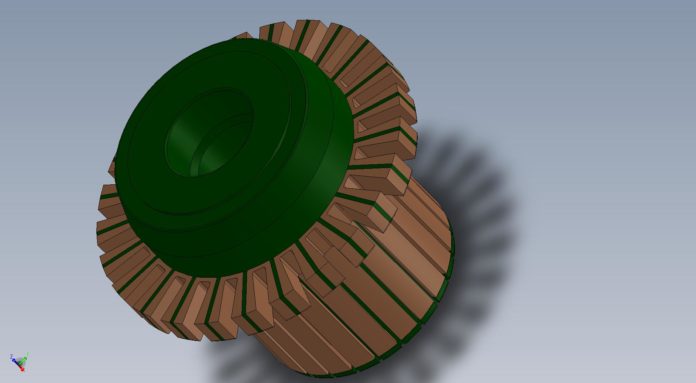
Reference partner in the production of hook-type electric commutators for A.C. and D.C. motors, Cagnoni operates on the market with a very broad range of products (diameters starting from 15 up to 30 mm), suitable for small appliances, automatic door-opening systems, automotive, power-tools, and so on. Such products are implemented starting from a continuous element (copper tube of 5 m) exploiting a unique up-to-date technology, which provides for obtaining the internal grips of the commutator bars from that part of semi-finished product that would be then removed by the successive milling phase.
In that way, no copper is added to create the gripping itself.
That process, developed by Osimo (AN) company itself, will enable a minor waste of raw materials, without affecting the product quality and granting total reliability and extreme flexibility to its customers.
Concerning the sector of electric head commutators, the last decade has been characterized by more and more articulated and interacting competitive factors, summarized in the following points: reduction of sale prices, decrease of component costs, rise of the contents and of the performances of electric motors, increase of the reliability and duration demands.
The offer excess compared to the demand, together with the appearance of unbranded products on the market and, especially, of big low cost producers, have determined a price fall and a standardization “towards the middle” of the functional characteristics of products. In this context, the sector companies’ challenge consists in enhancing the quality and the variety of the offered services by seizing, for instance, the potentialities made available by new technologies.
Increase performances and tear the costs down
The primary manufacturers of electric head commutators use a consolidated technology that provides for the assembly of copper bars (manufactured through cold drawing, successive parting-off and eventual removal of material in excess) around opportune positioning cages. Then they proceed to the moulding of the thermosetting resin to fix the position of bars, to the milling to create voids on the head, the undercutting to eliminate insulating material present between one bar and the other, to turning to achieve the final geometry and, finally, to finishing operations. A technology that certainly allows implementing components that feature good performances and quality but nevertheless, still today, affected by a series of problems and criticalities among which the main ones concern: the use of a big quantity of raw material (copper) connected with the fact that the piece geometry is obtained by stock removal.

The need of removing the insulating material from the sliding surface of the brush (undercutting) which implies quite long machining times, due to the particular product geometry (accentuated head overhang), it is necessary to use cutters with very small diameter (about Ø 10mm) that perform a very low feed speed (scarce product productivity).
Moreover, the undercutting needs a very precise cut positioning, with the result of calling for level electronics (tracking mode cutting) and of producing anyway a certain quantity of non-compliant products.
The inner gripping of the commutator bar, realized through a big T-shaped protuberance, it too of copper, which notably increases the mass to be held while rotating.
Dealing with the current above-described survey, it is therefore obvious that the development guidelines of the reference market precisely converge towards an ever-growing demand for new technologies, for increasingly performing products at low costs. Research and development, strongly pursued by Cagnoni itself, over the last few years was aimed at studying, experimenting and developing an alternative technology to the conventional ones used by competitors today.
Such technology, which provides for cold moulding (instead of the traditional stock removal machining), will permit to manufacture copper head commutators (therefore optimizing the use of raw materials) with better final characteristics, lower industrial costs than those applied on the market today and with both economic-productive and environmental benefits.
Therefore, the company’s R&D department intends to create a different product/process from the present state-of-the-art.
Axalta A new epoxy resin Voltacast 3310
Axalta, a global supplier of liquid and powder coatings, launches Voltacast 3310/Voltacast H134, a new epoxy-based casting resin system that expands the Voltacast product portfolio of casting resins from Axalta’s Energy Solutions business.
Voltacast 3310 is specifically designed to offer high thermal stability in combination with high thermal conductivity for winding head encapsulation or total stator encapsulation of electric motors, like servo drives or large machine tools.
“We are always looking to expand our product portfolios and to meet the ever-evolving needs of our customers,” explains Christoph Lomoschitz, Global Product Manager for Axalta’s Energy Solutions business. “Voltacast 3310 ensures outstanding resistance to a variety of automatic transmission fluid oils used in electric vehicles, and its high thermal conductivity in combination with oil cooling of electric motors allows maximum heat dissipation.”
Voltacast 3310/Voltacast H134’s anhydride-free system can be cured at room temperature or preferably at temperatures up to 70ºC. The cured material is flame retardant, fulfilling the requirements of Underwriters Laboratories (UL) standard 94, class V0, and will shortly receive official UL recognition.
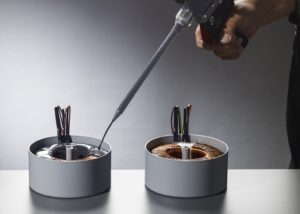 The new Voltacast 3300 range is comprised of two-component systems – an epoxy resin and a hardener. The products of the Voltacast 3300 range offer superior thermal conductivity, from 1.2 W/mK up to 1.6 W/mK, without compromising an easy and safe application, as the processing viscosities are only 2200 mPa*s to 2400mPa*s at room temperature. The new Voltacast materials are very versatile, with glass transition temperatures of 24ºC, 60ºC and 95ºC, depending on the final application requirements.
The new Voltacast 3300 range is comprised of two-component systems – an epoxy resin and a hardener. The products of the Voltacast 3300 range offer superior thermal conductivity, from 1.2 W/mK up to 1.6 W/mK, without compromising an easy and safe application, as the processing viscosities are only 2200 mPa*s to 2400mPa*s at room temperature. The new Voltacast materials are very versatile, with glass transition temperatures of 24ºC, 60ºC and 95ºC, depending on the final application requirements.
Energy saving IE4 synchronous motors
To optimise the total cost of ownership, Nord Drivesystems supplies drive solutions to reduce operating costs. This includes reduction of the number of versions with the aid of the Nord modular system, reduction of energy consumption through the use of efficient IE4 synchronous motors, long service life and low maintenance Nord drive units. Energy saving IE4 synchronous motors from Nord are highly efficient and meet the most stringent energy regulations – and thanks to Pmsm technology, also in the partial load and speed ranges. This enables significant cost savings. In addition, Nord systems facilitate reduction of the number of versions and spare parts management. For Intralogistics and airport applications, Nord supplies the LogiDrive standardised geared motor system consisting of an IE4 synchronous motor, a two-stage bevel gear unit and a Nordac Link field distributor is a perfectly matched drive system. For pallet conveying technology Nord offers an economical combination of an asynchronous motor and the Nordac Base frequency inverter.
The high quality and reliability of Nord Products results in a longer service life with lower maintenance costs, which further reduces the total cost.
Also, with the aid of Nord frequency inverters, maintenance and repair costs can be significantly reduced and plant availability increased.
New Magna motor will equip the cars of a Europe-Based Global OEM
eDS Mid by the Canadian Magna manufacturer is a compact high-speed electric motor that offers a range of scalable power from 100 kW to 140 kW, optimized for 800 V. As high-voltage eDrive system for electric AWD applications, it allows a fast reconnection through a new uncoupling system and provides a high-efficiency inverter with silicon carbide (SiC) technology that shares in the best efficiency, driveability and safety of the category.
Recently, the company has announced that its new electric motor intended for the medium-range has been ordered by a premium European automotive company.
The eDS Mid motor has been designed for medium-size electric cars, then it is likely to be used for compact sedans and for medium/small range SUV.
Driver for 30%-smaller drive systems
The last overseas news regarding the new developments of the technology for electric motors concern Texas Instruments.
The multinational has recently presented a driver for brushless DC motor (BLDC) Degree 0, highly integrated, for the drive systems of high-power 48 V motors, such as traction inverters and starter motors /generator of mild hybrid electric vehicles (MHEV). What are its outstanding peculiarities?
DRV3255-Q1 can help designers in reducing the sizes of motor systems by even 30%, providing the highest gate drive current in the sector for better protection and higher output power. Complying with the most severe safety requisites, the new motor driver has been designed according to the development process of TI functional safety certified by TÜV SÜD and shares in reaching the integrity level of ASIL D automotive safety. Further information are available on the site www.ti.com/DRV3255-q1-pr-eu.
The reduction of the board footprint is possible up to 30%: DRV3255-Q1, driver for 48-V three-phase BLDC motor integrates the active high-side and low-side short circuit logic, which eliminates external transistors and the control logic. Through the active short circuit logic integration and the dynamic response to failures, the new motor driver allows designers not only to simplify their designs but also to supply up to 30 kW of motor power, so decreasing the board footprint and the cost in bill of materials for drive systems for 48-V motor.
E-motors India: here is the TSRF technology
Let us move to India to understand what is boiling in the pot in the electric manufacturing of a Country that is proving a higher turmoil than what expected. Badve Engineering company, a Tier-1 automotive manufacturer based has recently established a partnership with the Israeli startup EVR Motors versus a strategic commercial agreement to manufacture electric motor technology for India’s rapidly growing two-and-three-wheeler electric vehicle market, which constitutes around 90% of the Indian electric vehicles market.
Precisely to deal with the growing demand, EVR motors has developed a unique patented motor topology: the Trapezoidal Stator Radial Flux Permanent Magnet.
Under the new strategic partnership, Badve Group will manufacture in India EVR’s proprietary Trapezoidal Stator – RFPM electric motors, which measure half the weight and size of competing electric motors yet claim high power and torque performance.
The TSRF technology is said to be distinctive because of its lightweight and compact design. The proprietary TS Topology has a unique trapezoidal tooth shape core structure, which improves flux distribution, reduces leakage, and gives superior heat dissipation with good thermal capacity. The TS topology can be tailored for a wide variety of requirements and enable multiple variations based on the same design and tooling. The air-cooled motor for two-wheeler application weighs under 7kg, has a diameter of 130mm and is said to be a perfect fit for Indian electric two-wheeler applications. The modular voltage range is between 48- 96V.
Carpanelli presents the self-braking motors with rectifier
Recently, the manufacturer Carpanelli has informed us that all series of its electric motors are available in self-braking versions, too. “The brake can be in both alternate and direct current. The DC brake can be used as a standard brake or as a holding brake. The braking group can be associated with Carpanelli electric single-phase, three-phase, or double-polarity motors”, the manufacturer explained in detail.
In the press release, we can read that in the industrial field, or automation systems, it is common to find mechanical braking systems coupled on the axis of asynchronous motors. “These brakes are generally operated by an electromagnet, with power supply derived from the same power supply line of the motor. When the power supply is cut, the brake closes due to the springs installed in the brake unit, creating a constant braking torque. This type of electromagnetic brake is generally of disc type: coupled to an asynchronous motor, it creates a single system called a self-braking motor, including a three-phase or single-phase asynchronous motor. The electromagnetic-type brake may have its coil powered by direct current or alternating current, depending on the typology. If the electromagnetic brake coil must be powered in direct current, a suitably sized rectifier bridge is used”.
Speaking instead of a rectifier, it can generally be housed inside the motor terminal box, or outside the box, screwed like a cable gland. “This type of rectifier shows some peculiarities: it satisfies the task of rectifying alternating voltage into direct voltage and it incorporates protection devices against overvoltages. Rectifiers can have 4 or 6 terminals, or PG with wires, through which the connections to the electromagnetic brake coil are carried out”, Carpanelli specifies. “Self-braking motors assure utmost safety, precision, and reliability. They provide a control in locking phases and are mainly used to: reduce machining times by lowering machine slowdown times; carry out parking; satisfy the requirements connected with safety regulations”.
Soft starters preventing mechanical and electrical problems
Lovato Electric‘s ADXN soft starters manage the soft start and stop of electric motors, preventing mechanical and electrical problems that can reduce their lifetime.
The range includes devices from 6 to 45 A, only 45 mm-wide and subdivided into 2 structural sizes according to the nominal current.
Ideal for manifold applications such as the control of pumps, fans, compressors, conveyor belts and mixers, they are configurable rapidly and intuitively for a reduced set of parameters, minimizing the commissioning time.
The wide line voltage range, from nominal 208 to 600 VAC, makes them suitable for each market, without needing to manage different codes depending on the present voltage in the plant.
ADXN soft starters are available with two auxiliary power supply voltages: 24 VAC/DC, typical voltage of automation panels, or 100-240 VAC, present for instance in pumps’ control panels.
The base version (ADXNB) is ideal for those needing a starter easily configured, with the only aim of managing acceleration ramp and deceleration ramp, adjustable by means of the 3 potentiometers installed on the front.
The aero-taxi by AutoFlight has passed the first transition test
Great success for the first recent transition flight test of Prosperity aero-taxi with vertical take-off by the Chinese company AutoFlight, which has risen to an altitude of 150 metres, reaching a maximum speed of 198 km/h. A transition occurs when a plane moves from a vertical to a horizontal motion and it is one of the most committing parts for an eVTOL.
The vertical test flight of the Prosperity I concept has needed eight rotors to lift the 1,500 kg of the electric aircraft into the air. Once the plane has reached an altitude of 150 metres and the relative speed of 160-170 km/h, the fixed-wing part of the eVTOL has generated a lift. In this stage, Prosperity I has entered the transition phase: top rotors have stopped turning and are blocked in an aerodynamic position whereas rear propellers have pushed the aircraft forward as a conventional fixed-wing aircraft.
However, let us go back to the plane: Prosperity I is an innovative eVTOL with declared autonomy of 250 km at a maximum cruise speed of 200 km/h. The design is lift & cruise, with the passenger pod surmounted by a pair of big wings, equipped with long propulsion pods.
AutoFlight hopes to obtain the certification with both the Chinese CAAC and with the European EASA within 2025 to perform the function it has been designed for: short transfers among city zones, transfers to the airport and connections between two neighbouring cities, so avoiding the road traffic. It is estimated that a travel taking hours by car will be reduced to about 10 minutes with eVTOL, without being less safe or more expensive than a taxi ride.




